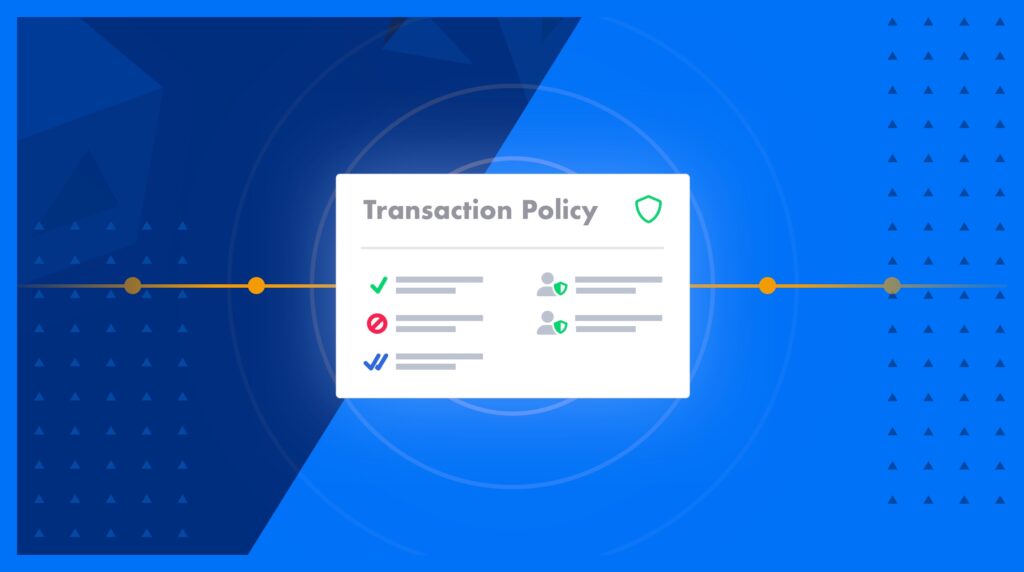When working with digital assets or crypto, it can be difficult to know how many organizations and teams have access to your private keys at all times.
In order to protect your customers and investors, it’s critical to develop a transaction and user policy layer. From compromised internal actors to simple fat fingers errors, the crypto industry is no stranger to both mistakes and targeted attacks leading to major losses.
Traditionally, when organizations begin working with digital assets they rely on cold storage-based custody to insulate assets offline from possible losses; while this technology is reliable from a security standpoint, it lacks the operational efficiency teams need in today’s crypto markets, and isn’t necessarily foolproof against internal threats (whether they’re human error-based or actual malicious actors).
Digital asset and crypto transaction policies, on the other hand, are an excellent layer from both a security and an operational efficiency perspective. In this blog post, we’ll introduce the concept of a crypto transaction policy – and explain in more detail why it’s so effective to develop a set of policies at any stage of your business.
What is a crypto transaction policy?
A crypto transaction policy is any rule that governs digital asset transactions within an organization or team. These sorts of policies range from totally manual spreadsheets – which are self-governed and essentially trust-based – to completely automated.
Transaction policies can cover a variety of different vectors, including but not limited to:
- Who can initiate a transaction within the organization?
- What amount of digital assets can be sent and over what period of time?
- Where can it be sent to (internal wallet, whitelisted address, exchange, smart contract)?
- Who within the organization needs to approve transactions (one admin approval, group of approvers, etc.)?
- What source do you want to assign the rule to (treasury, trading, royalty, etc)?
Crypto transaction policy example
Transaction policies prevent unauthorized withdrawls and also provide sound risk management. These policies are becoming standard crypto operating practice, and also a critical element of many risk and security certification processes performed by external auditors or organizations.
New employee policy example
Some organizations create policies for new employees that limit the amount of digital assets they are allowed to transfer in one transaction. The policy should also include “approvers” – these are employees who have been designated to approve the transaction request. After 6 months, it could be changed to a greater sum, and/or require less approvals (either manually on a spreadsheet, or automatically with a policy engine).
Why is it so important to implement crypto transaction policies?
In the case of a compromised internal actor, an automated approval policy would block the transaction and log all the individuals who attempted to withdraw funds from the organization. But transaction policies aren’t limited to malicious actors; they can also prevent loss of funds from fat finger errors. A transaction policy can validate that the destination is a pre-approved (whitelisted) address and ensure that at least two individuals within the organization approve the transaction.
Due to the immutable nature of the blockchain and the attraction of hackers to the space, it’s critical that each transaction is insulated with robust transaction and approval policies.
Having policies in place also makes it easier to expand the team without incurring more risk. It becomes increasingly difficult to scale a digital asset, web3 or crypto strategy without having checks and rules like this in place, as each new employee introduces new risk vectors.
Digital asset and crypto transaction policies empower teams and organizations to become operationally efficient. In today’s constantly changing market conditions, developers, traders, and finance teams need access to assets 24/7, no matter where they’re physically located.


